|
Heads up that this is a completely non-philosophical post! I've been participating in a group of US-based growers who are trialling saffron as a cash crop. The research group is based at the University of Vermont in Burlington, VT, so I attended their first annual conference last year, planted 500 saffron corms on my own land, and just recently completed a series of dye experiments using different parts of the saffron flower. The stigmas, or female parts of the flower are the expensive spice. Stamens and petals are usually waste materials. I heard that another grower was selling stamens to Buddhist monks for dyeing robes, so I thought I'd experiment with my own crop, augmented by donations of stamens and petals from some other growers on our listserve. (It takes A LOT of stamens to get a usable weight of dyestuff to play with!) The following content is the report that I wrote up for the rest of the saffron growing community. I'm putting it here as a view into some of the side activities that go on in my studio and also to illustrate the trial and error involved in figuring out how a dye material works. Hopefully my experiments will prove useful to anyone else wanting to dye with saffron and I welcome comments from anyone who has discovered other methods that work with stamens and petals. Dyeing with all Parts of the Saffron Flower February 2018 Hannah Regier Using saffron stamens, petals and stigmas obtained from many growers from the saffronnet listserve, I did a series of dye tests on wool/alpaca yarn. Four different mordant treatments were used and several different concentrations of dried flower parts to weight of fiber (WOF) were tried. Basic Process
Testing grid The following grid shows all of the dye tests that I ran with the different parts of the flower, using 4 different mordants. The “% WOF” refers to the weights of plant material I used in proportion to the Weight Of Fiber. All of the tests were done on 2 gram skeins of yarn so 100% WOF would mean I used 2 grams of dyestuff for that test. The codes in each cell are what I wrote on the label of each skein so I could keep track of which dye jar they came from. Results Stigmas have by far the strongest dye potential. The dye made from 12% stigmas per WOF was incredibly bright, compared to the darkest shades made from 100% stamens per WOF and 200% petals per WOF. Despite my research and finding information that refers to saffron as a substantive dye (i.e. not requiring a mordant), dye uptake was consistently better with Alum and Iron as mordants. I am assuming light and wash fastness will also be better on the mordanted samples. Petal Samples: The top skein in each section is mordanted but undyed yarn for comparison. Note that the pink color on the rhubarb leaf mordanted yarn comes mostly from the rhubarb leaves themselves, not the saffron. Stamen Samples: Stigma samples: Note that the 2nd and 3rd samples in each section are from reintroducing new yarn into the used dye baths, called “exhaust dye baths.” The persistent color results, show that the dye is strong enough to be used several times and/or at even lower concentrations. Conclusions
Given the cost of saffron stigmas, it may be hard to justify using them as a dye material, but I will probably continue to explore it with what I grow myself. The colors obtained from the stamens and petals are nice, but can be achieved with much smaller quantities of other locally found natural dye materials, so using those parts of the saffron flower is probably not worth it, barring any breakthroughs in ways to get darker/brighter tones. Many thanks to the growers who sent me their stamens and petals for this experiment: North American Center for Saffron Research and Development at UVM, Jack Kennedy, Erin Stebbins, Joseph Walls, Sarah Salatino of Full Circle Gardens, Michelle Wells, and Miriam Haas.
10 Comments
Miriam Haas
10/27/2018 09:24:16 am
Hannah
Reply
Hannah
10/28/2018 01:15:41 pm
Hi Miriam, nice to hear from you. Glad my research is getting some readers! My saffron is verrrrrrrry slow to bloom this year. I can hardly blame it with several hard frosts already here and some snow-ish stuff on it now.. hopefully the temps will rise enough for it to recover!
Reply
Lucinda Rubio-Barrick
7/19/2020 01:55:59 pm
Thank you for this information on saffron. I am lucky to get a small box of saffron threads from Spain every year. I have more than I can use in food. A couple of years ago I tried dying a small silk scarf just with water where I had seeped threads. The result was a beautiful pale orange color. I would like to try with alum.
Reply
7/27/2020 11:46:03 pm
Hi Hannah
Reply
Mary Ann Kell
12/17/2022 02:39:45 am
Hi Hannah,
Reply
4/19/2023 06:52:58 pm
Kia ora from Hira nr Nelson, New Zealand. As a lover of saffron for many decades (my parents have lived in southern Spain opposite Morocco for 39 years) I now grow my own here in NZ, just for myself. I have some ‘naked’ alpaca yarn which I want to dye and knit up so was delighted to find your research to help me along. Many thanks indeed! I’m just picking this years as I write - it blooms during the same 2 weeks every year - amazing! Warmest wishes - Sophie
Reply
Shelly Berger
11/19/2023 02:04:20 pm
Great info... and the most complete I've found for eco dying protein fibers with saffron. Found a 20 year old package of saffron in my mother-in-laws kitchen from 1997... to old to use in cooking but still seems fine for dying. Going to combine it with native AZ desert creosote branches. Can't wait to see the results.
Reply
Sidney
3/18/2024 01:37:15 pm
I noticed that the shriveled mother corms that are at the base of the new daughter corms have a lot of color. For a quick test, I've just popped a few of these in warm water overnight and the water is a nice yellow color. It might be worth extracting color from these and saving the stigmas for food, especially if you dig the corms each Spring and replant in August
Reply
Rosemary Reudelhuber
7/7/2024 07:31:51 am
I am interested in knowing more about the dyeing of Buddhist robes.
Reply
Your comment will be posted after it is approved.
Leave a Reply. |
AuthorHannah Regier Archives
May 2023
Categories
All
|


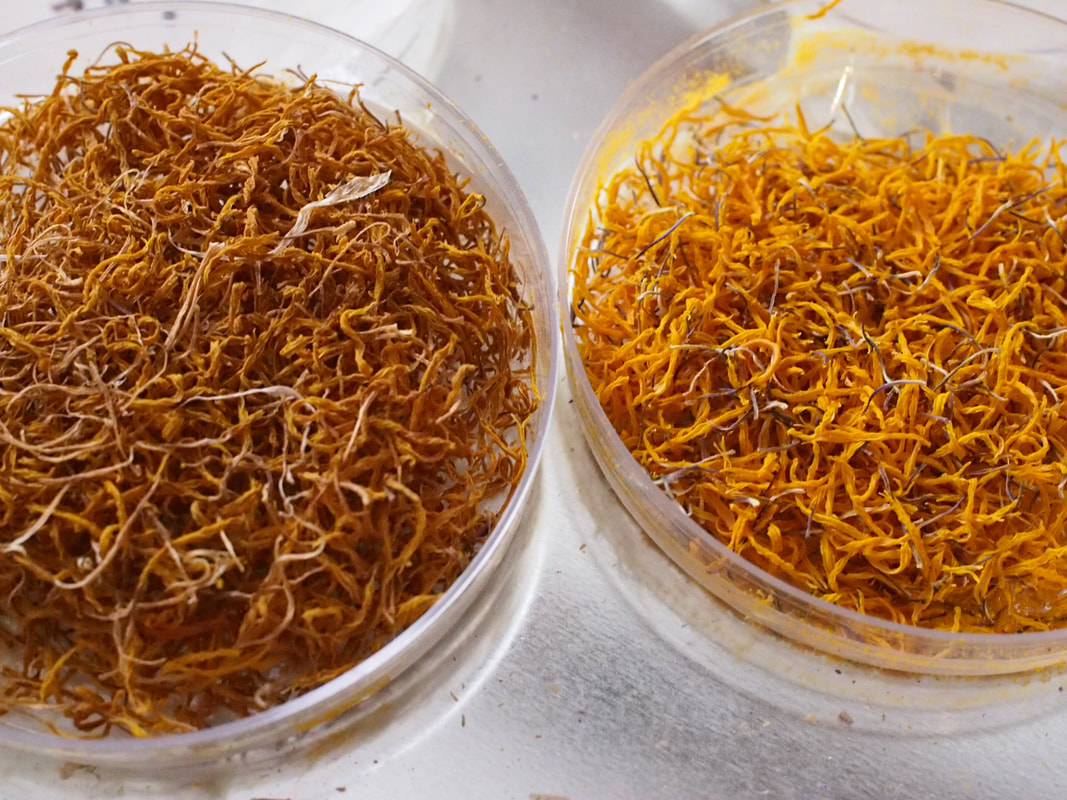
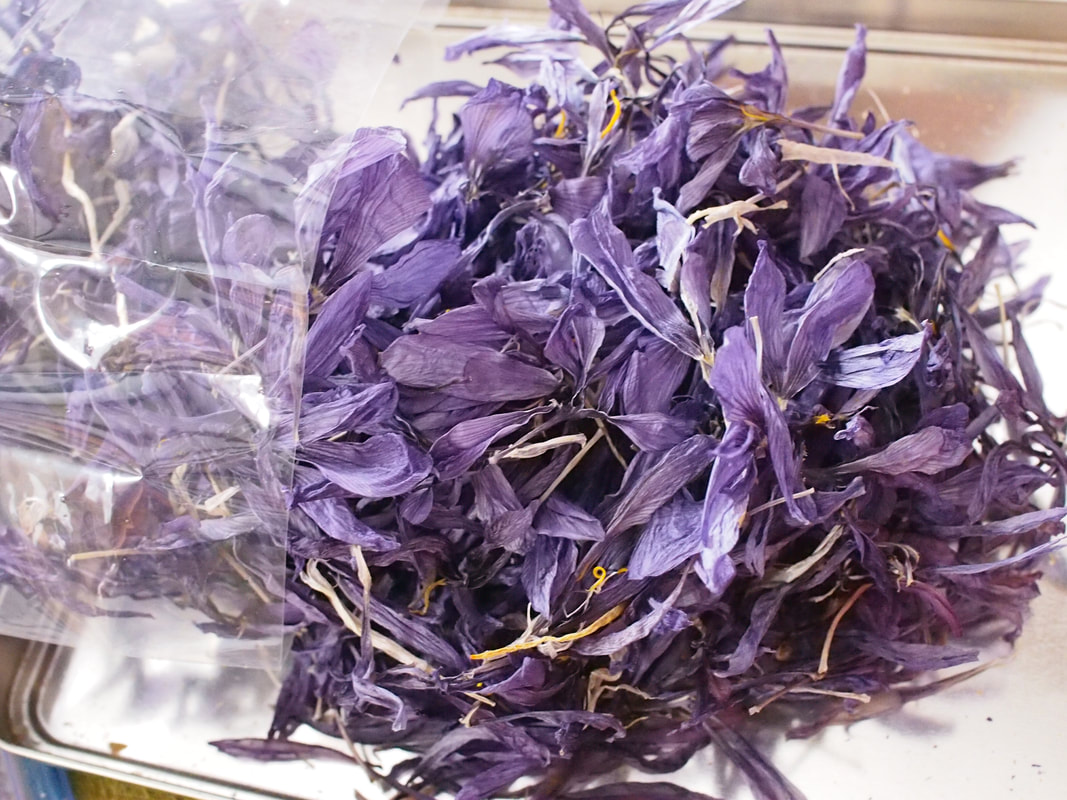
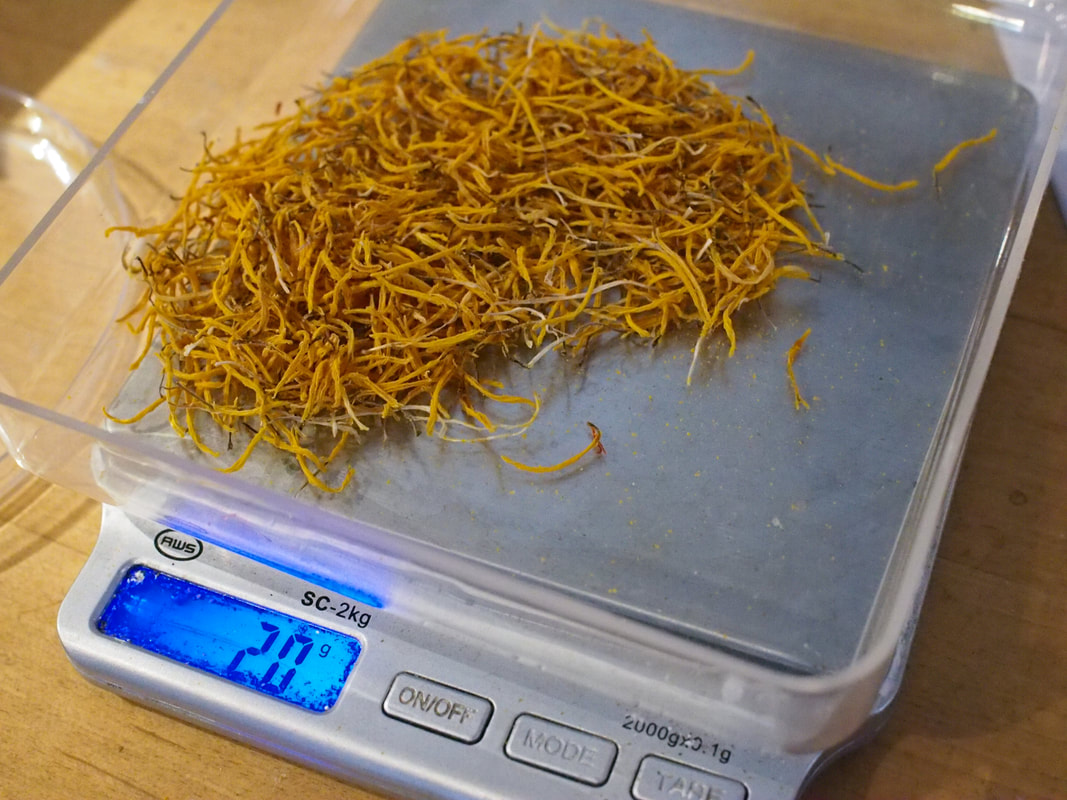
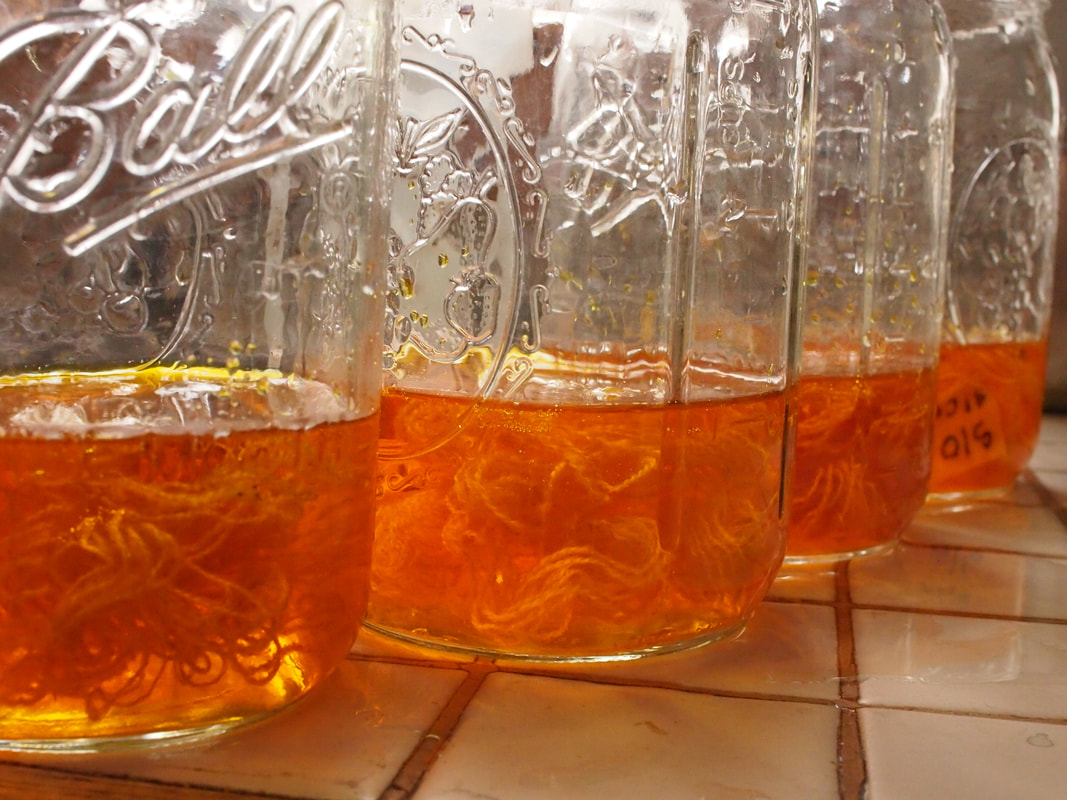
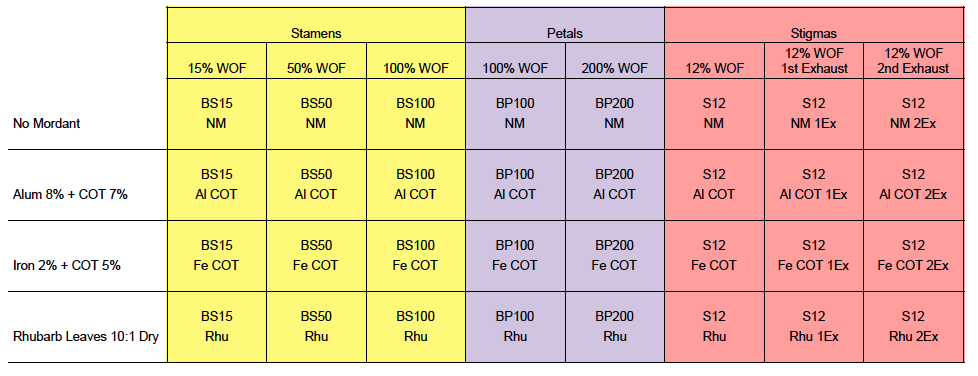
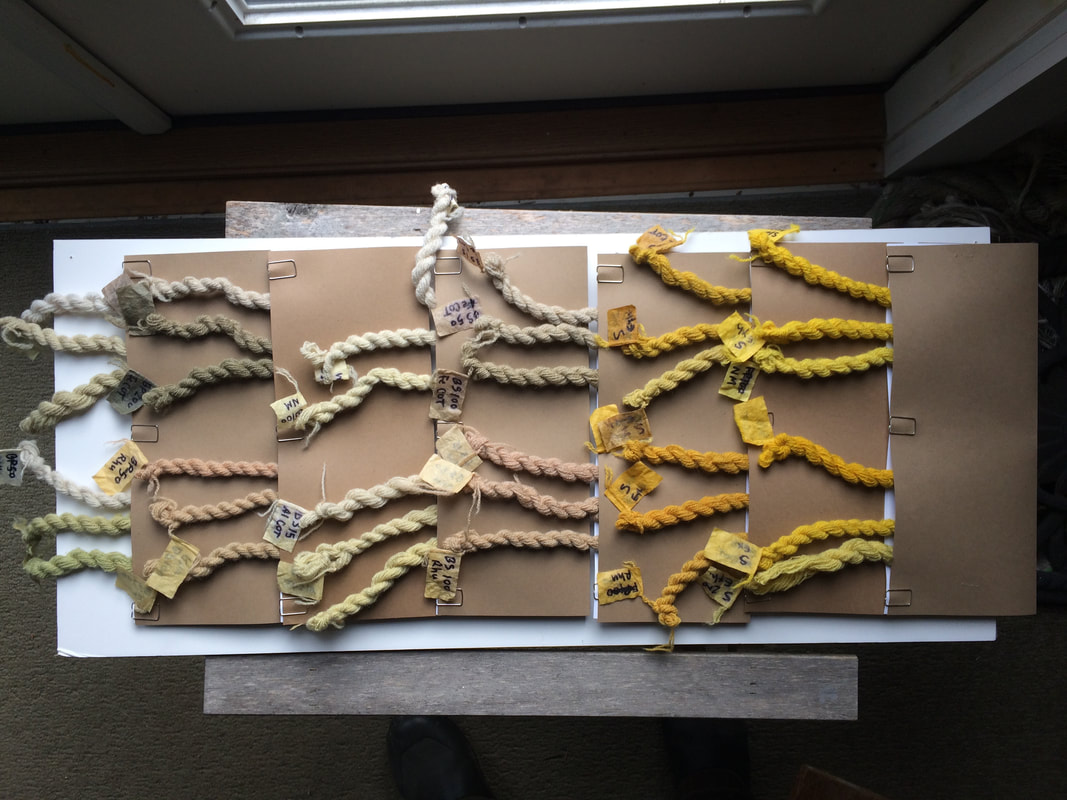
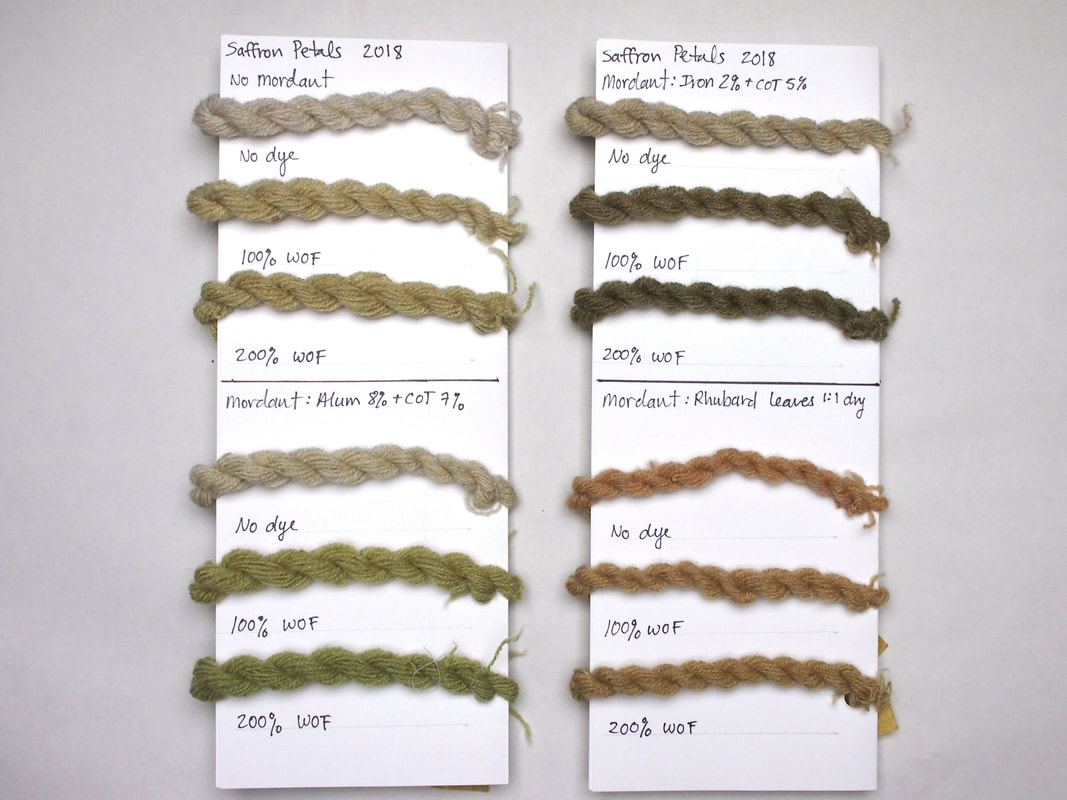
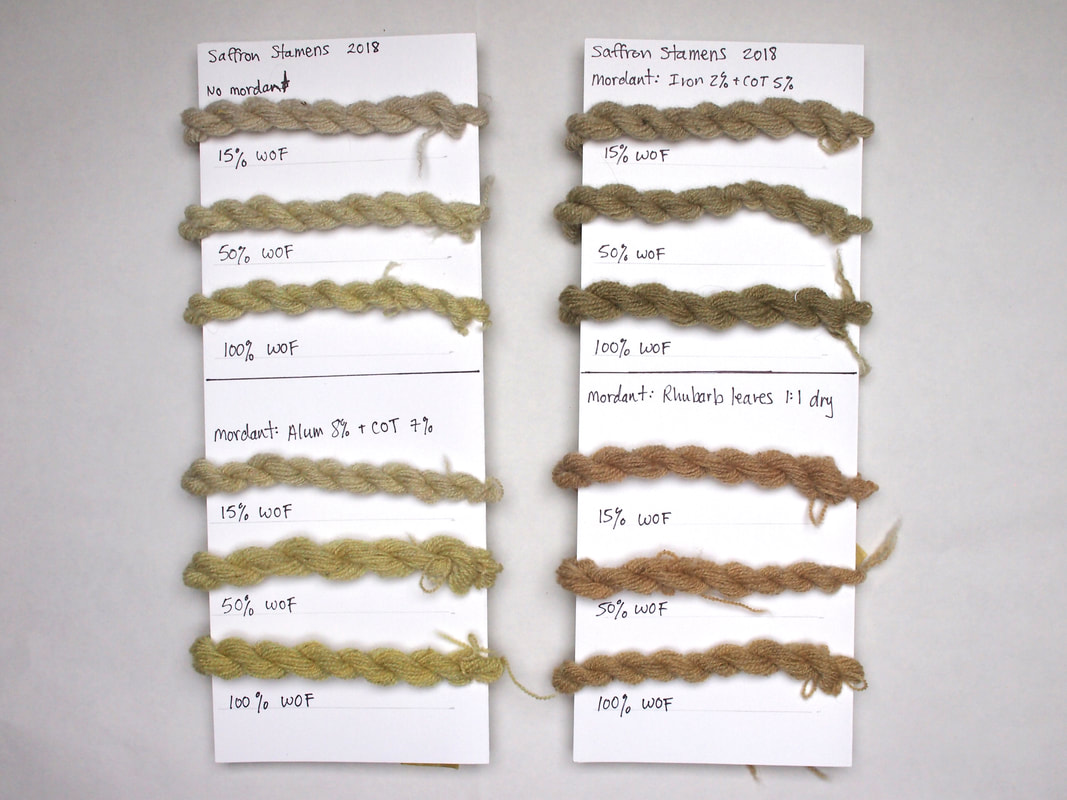
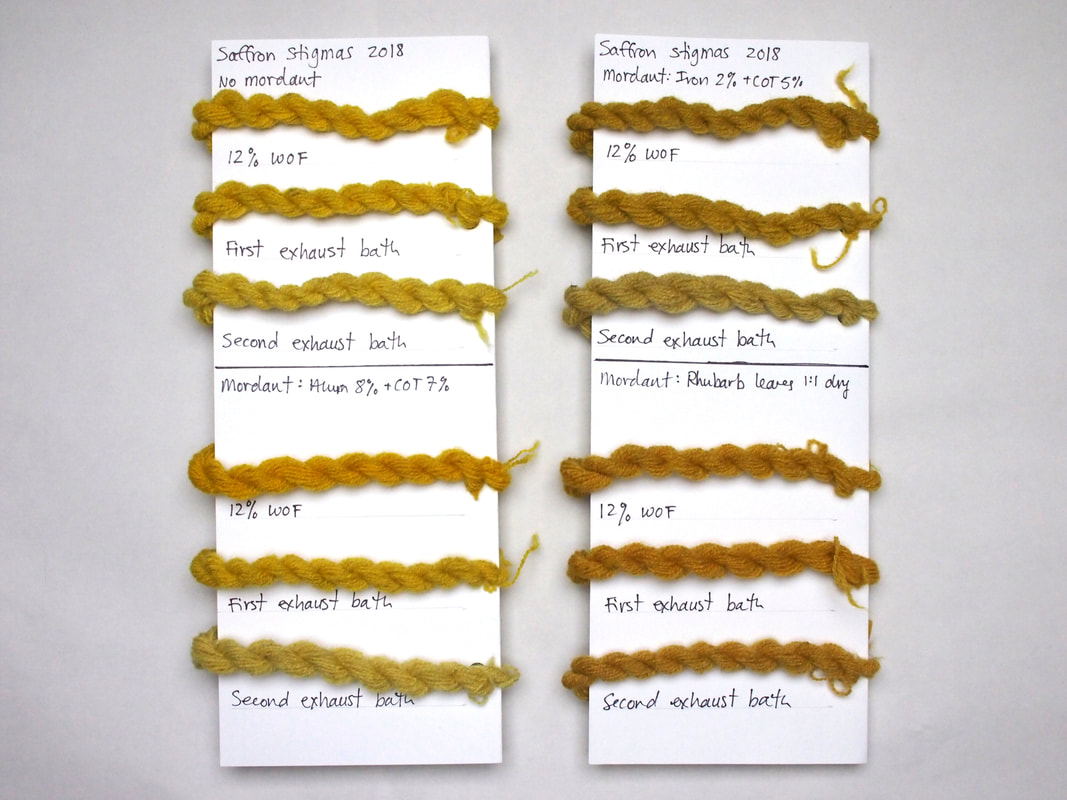
 RSS Feed
RSS Feed